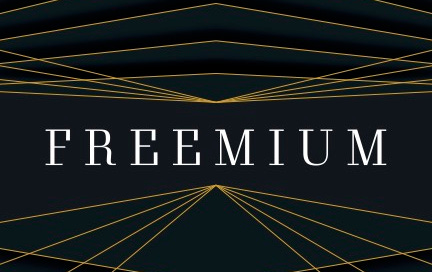How much do you pay for a new lead? A new customer?
Typically a company spends money on Marketing to get a new customer’s attention and Sales to convert that lead into a closed-won deal.
But what if we didn’t have to do that at all? What if our existing customers recruited new customers for us? What if, in the natural flow of product use, existing customers invited new customers to join them—to comment, collaborate, compare, or otherwise join in the use of the product. That would be “free” customer acquisition for us, which means the larger our customer base, the more it can work for us.
In PLG, these are called “Loops,” and they exist to recruit new users, bring existing users back into the product and expand usage within existing accounts. Because the product is built to facilitate these actions, they are not dependent on human-led actions (like Sales, Marketing, or Customer Success), and we get additional leverage, the larger our customer base gets.
Chapter 12 of FREEMIUM introduces the concept of Loops and ties it into the PLG Bowtie in a way that caps off our discussion of PLG mechanics and tactics.
Chapter podcast below.
Enjoy!
Chapter 12 Podcast:
XOXO,
Chapter 12 Summary
Loops are tactics to leverage current users’ product usage to drive more Acquisition, Engagement and Expansion
Loops are explicitly designed and measured by growth managers as part of ongoing, iterative tuning
Small improvements in self-service metrics triggered by Loops can contribute to both growth within existing customers (cohort Expansion) and new customer Acquisition
Lots of small improvements in a self-service PLG machine can combine to create compound growth
Manager Minute
Thinking about your own company, take time to reflect on the following questions:
Where within our business do we currently have Loops (explicitly designed and measured or not)?
____________________________________________________________
____________________________________________________________
____________________________________________________________
How many additional cohort Expansion Loops can I brainstorm for our business?
____________________________________________________________
____________________________________________________________
____________________________________________________________
How many additional new customer Acquisition Loops can I brainstorm for our business?
____________________________________________________________
____________________________________________________________
___________________________________________________________
What other Growth Loops can I brainstorm for our business?
____________________________________________________________
____________________________________________________________
____________________________________________________________
____________________________________________________________
____________________________________________________________
____________________________________________________________
____________________________________________________________
___________________________________________________________
PART TWO SUMMARY:
PRODUCT-LED IMPLEMENTATION AND TACTICS
In Part Two we dove into how and why PLG works and the mechanics for building it into your company.
We demystified the term “Growth Team” and learned that they are small, cross-functional teams focused on specific growth objectives. Growth teams measure themselves against a Product Growth Model that contains the key assumptions around various growth levers. Growth teams include product engineers, which allows them to experiment with product features, messaging, Loops, etc. They iterate toward the growth objectives, carefully measuring the results of each experiment and doubling down on tactics that work.
We learned that instead of placing a focus on sales, PLG companies focus on end-user Acquisition and Activation. Users are invited to experience the product before purchasing. If we can help users achieve impact, we can charge them money over time–after they have fallen in love with the product.
We looked at how explicitly PLG depends on a wide top-of-funnel: the more users in the front-end of the funnel, the more opportunities we have to Activate, Monetize, Retain and expand those customers. Once a new user is acquired, we must help her achieve First Impact within the limits of her attention span. We call this Activation, and we measure and optimize it.
We considered the order of operations for delivering value vs. extracting value. Delivering value comes first. Users and teams who are experiencing impact with the product are eventually invited to transition into a paid version of the product. This may happen at the end of a free trial or when they reach the limits of the free product. Free trials, freemium, reverse trials, and PLS are Monetization strategies often used by Growth Teams.
We learned why PLG companies focus so intensely on usage Retention, measuring daily-active, weekly-active, and monthly-active usership. Since usage Retention is a leading indicator of dollar Retention, and since Growth Teams can do something about usage Retention, this is where they focus.
We dove into Growth Loops (Loops) and virality and learned that Expansion in PLG is achieved via Loops. Loops are used to invite new users into the product, existing users back to the product, and colleagues within the same company to join in use of the product.
Up Next:
PART THREE
PRODUCT-LED GROWTH WITHIN LARGE ENTERPRISES
Read Part Three for a view into how PLG and Sales work together within large enterprises to produce multi-GTM Revenue Factories, according to sound principles of Revenue Architecture.







